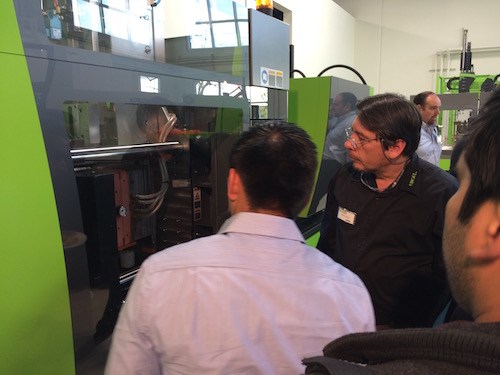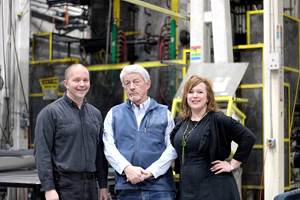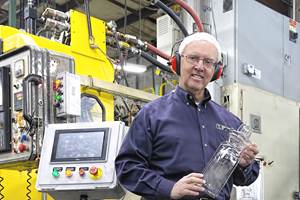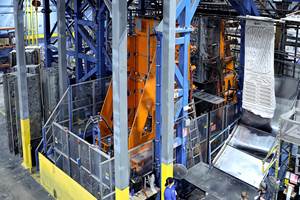The 5 M’s of Molding—Part I: Man (labor)
There are many areas in which personnel affect consistency and repeatability within a plastics operation.
There are many areas in which personnel affect consistency and repeatability within a plastics operation.
As a plastics operation evolves there are numerous factors affect productivity, and these detractors can be small or large…consistent or sporadic…obvious or hidden. In any continuous improvement-minded facility, there is always a need for repeated analysis of each job being run. The overall success or failure of each individual operation hinges upon effective review of inconsistencies and system failures. The company then develops and implements improvements, approaches and/or corrections to address shortcomings that could potentially include the purchase of specialized tools or equipment to better equip personnel.
One of the key requirements for profitable continuous improvement is starting out with a solid base to build on. When a job is turned over from engineering to production, all facets of the production line need to be in stable working order. This helps to prevent costly down time and scrap directly related to poor set up, and will assure bad product does not reach the customer.
There are 5 key components that must not only be reviewed during engineering’s development of each work system, but also as the job matures through continuous improvement. The “5 M’s of Molding” make up the solid foundation upon which a company develops a successful molding operation. This article outlines these principles and suggests ways to use them for the evolution of a company’s production capabilities.
Man (Labor):
Labor is one of the most critical contributors to the success or failure of any production development. There are many areas in which personnel affect consistency and repeatability within a plastics operation as it evolves. Here are some of the primary points to consider when evaluating labor as an area for improvement:
Work area: Engineering does not end when parts have been removed from the mold. An evaluation must be made as to what steps need to be taken to provide the customer with a top quality part every time. Make sure the area is well lit and mark locations for tables, tools, scrap bin, etc. Area layout should be designed to maximize operator efficiency and great care should be taken to assure that waste-of-motion has been eliminated. Inspection, part preparation and packaging should flow smoothly allowing the operator both comfort and ample inspection time. It is important to remember that the more labor intensive a job becomes, increased quality problems directly related to human error could be the end result.
Tools: As continuous improvement efforts intensify, it is important to listen to the workers who are most involved with the production end. These are the people who day in and day out have their hands on the parts being produced. Listen to their concerns and suggestions for areas of improvement and provide them with the tools that best fits what needs to be accomplished, thoroughly and quickly.
Defects: It is important to note that quality should be molded in and not sorted. There are circumstances though where depending on operators is necessary. Be sure that they have been fully trained regarding what defects they are looking for, and whenever possible show them what area on the part a defect would normally be found. Track scrap data to identify what defects are most common and then look for solutions through mold modification, process change, etc. to eliminate or significantly reduce the defect.
Ergonomics: It is easy to overlook the importance of this category to the overall profitability of a company. Workplace injuries drive insurance costs, which inevitably reduce the overall profitability of every project on the floor. As you are developing work instructions, look for areas of the job that require frequent twisting, bending and turning. Evaluate methods and/or tools to improve the workflow of the station.
Work instructions: Operational instructions are a vitally important tool once the work pattern has been established. Great care should be put into providing all personnel responsible for the various tasks a job requires with very complete and concise directives. Pictures are a great tool that allow visual explanations of various components. Work instructions should be written in the simplest form possible with detailed explanations of all required information.
Human Error: As mistakes happen, review the fault for ways to eliminate failures from happening again. The “5 Why” system is an effective method for getting to the root cause of failures and developing solutions. Here is an example of this method:
Problem: 32 bad pieces were packed that had splay on the parts
Why? The operator did not catch the mistake
Why? It was a new defect that had never been seen on this part
Why? The dryer ran low on material which resulted in light splay
Why? The material handler did not check the material as frequently as he should
Why? He is new and needs retraining on the frequency of checking the hopper
Once the 5 why’s have been asked, it is now time to review the problems and establish solutions to prevent a reoccurrence. For instance, the operator missed the mistake because it had never happened before. To fix this we can implement a visual picture or defect part to be kept at the press in order to assure ourselves that the new problem has been passed along to everyone responsible for part inspection. The hopper also ran low due to an inexperienced material handler. The 5 why’s suggests that this person be retrained to prevent this situation from happening again.
Garrett MacKenzie is the owner and editor of www.plastic411.com. Mackenzie started in plastics at the age of 19 as an operator, eventually moving up through the ranks to engineering and management over a 29-year timeframe. He currently works as a plastic injection consultant in engineering and training capacities. He can be contacted at garrett.mackenzie@mail.com.
Next week, Part II in The Five “Ms” of Molding: the Mold.

Related Content
Blow Molder Confer Plastics Celebrates Golden Anniversary & the ‘American Dream’
This family-run firm fills a specialized niche with a culture of innovation and environmental stewardship that realizes the dreams of its founders, its employees and its customers.
Read MorePlastics Processors Who Hire ‘Second-Chance’ Workers Do Well by Doing Good
Two blow molders with long-standing programs of hiring formerly incarcerated low-level offenders have helped these individuals re-enter their communities and have benefited from an additional resource during chronic labor shortages.
Read MoreTeaching Kids About the ‘Magic’ of Manufacturing
Making something out of (almost) nothing is an ‘eye opener’ for youngsters in their first exposure to plastics processing.
Read MoreThe Cost of High Employee Turnover in Injection Molding: Why Retention Matters
Starting in molding in 1993 and clocking in for nearly every job on the floor over the intervening decades, I’ve seen all sides of the hiring, training and retention process in the industry. Here are my thoughts on how to keep your most important asset — your people.
Read MoreRead Next
Making the Circular Economy a Reality
Driven by brand owner demands and new worldwide legislation, the entire supply chain is working toward the shift to circularity, with some evidence the circular economy has already begun.
Read MorePeople 4.0 – How to Get Buy-In from Your Staff for Industry 4.0 Systems
Implementing a production monitoring system as the foundation of a ‘smart factory’ is about integrating people with new technology as much as it is about integrating machines and computers. Here are tips from a company that has gone through the process.
Read More























